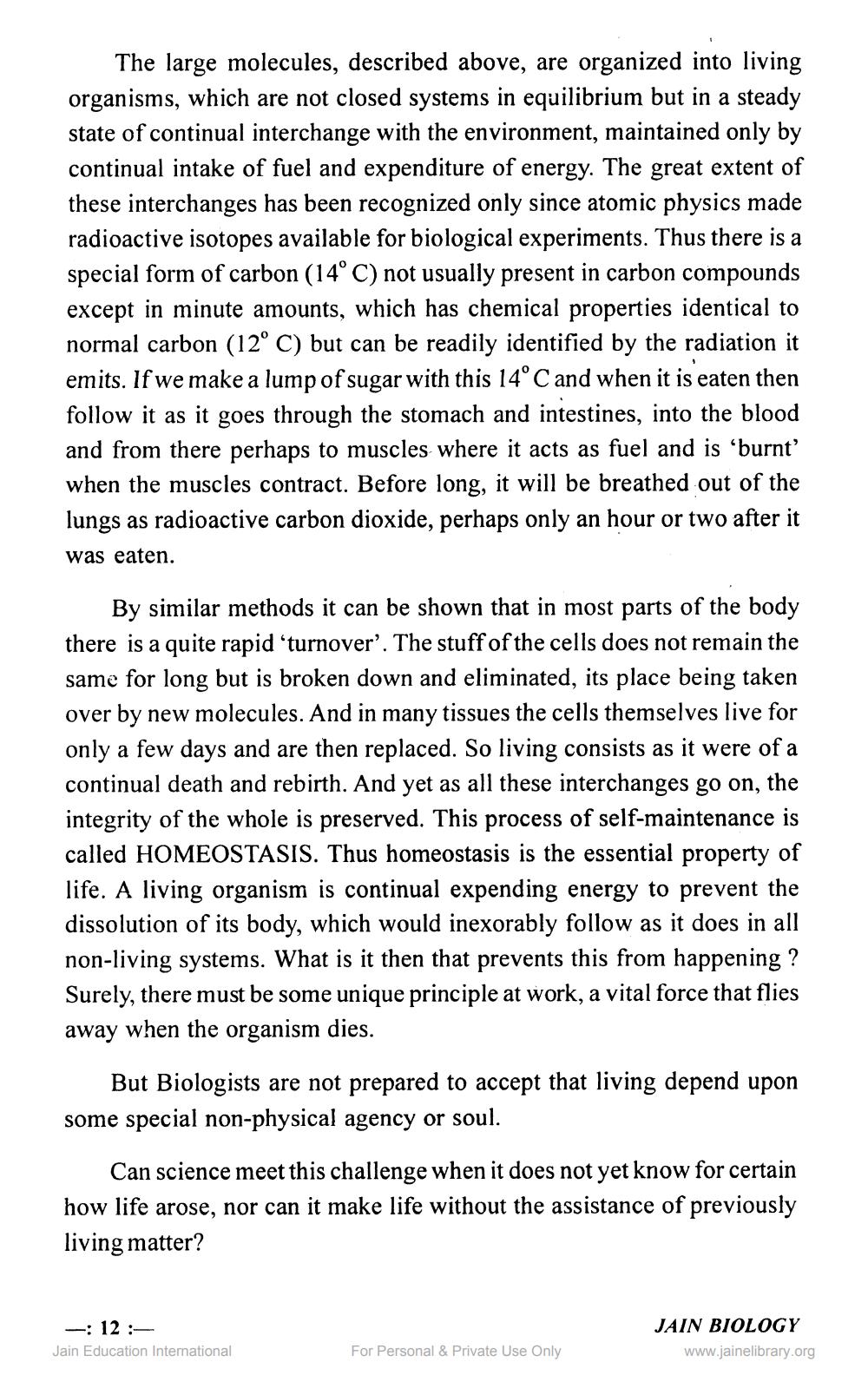________________
The large molecules, described above, are organized into living organisms, which are not closed systems in equilibrium but in a steady state of continual interchange with the environment, maintained only by continual intake of fuel and expenditure of energy. The great extent of these interchanges has been recognized only since atomic physics made radioactive isotopes available for biological experiments. Thus there is a special form of carbon (14° C) not usually present in carbon compounds except in minute amounts, which has chemical properties identical to normal carbon (12° C) but can be readily identified by the radiation it emits. If we make a lump of sugar with this 14° C and when it is eaten then follow it as it goes through the stomach and intestines, into the blood and from there perhaps to muscles where it acts as fuel and is 'burnt' when the muscles contract. Before long, it will be breathed out of the lungs as radioactive carbon dioxide, perhaps only an hour or two after it
was eaten.
By similar methods it can be shown that in most parts of the body there is a quite rapid 'turnover'. The stuff of the cells does not remain the same for long but is broken down and eliminated, its place being taken over by new molecules. And in many tissues the cells themselves live for only a few days and are then replaced. So living consists as it were of a continual death and rebirth. And yet as all these interchanges go on, the integrity of the whole is preserved. This process of self-maintenance is called HOMEOSTASIS. Thus homeostasis is the essential property of life. A living organism is continual expending energy to prevent the dissolution of its body, which would inexorably follow as it does in all non-living systems. What is it then that prevents this from happening? Surely, there must be some unique principle at work, a vital force that flies away when the organism dies.
But Biologists are not prepared to accept that living depend upon some special non-physical agency or soul.
Can science meet this challenge when it does not yet know for certain how life arose, nor can it make life without the assistance of previously living matter?
-: 12 :
Jain Education International
For Personal & Private Use Only
JAIN BIOLOGY www.jainelibrary.org




